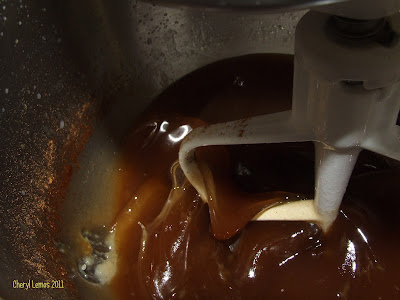You know why water doesn’t wash away dirt, right? Well, I’m going to assume you don’t and tell you anyway.

Water is H2O . . . which, in layman’s terms is, one little bit of oxygen and two tads of hydrogen. The two hydrogen tads like to hang out with the oxygen bit, the tads are on one side of the molecule and the bit is on the other. All kinds of chemical mumbo jumbo magical stuff happens which basically just makes water molecules stick together to make . . . well . . . a whole bunch of water.

Okay, so back to the original question. The bonded water bits and tads create a pull in every direction - except at the surface. Because the fellas on the surface have no other fellas above them to pull on them, so they are only pulled by the ones underneath them. This creates surface tension, like a skin . . . water skin as it were, but not a waterskin.

Water strider insects actually skim around on the skin-like surface of ponds and streams . . . they can actually walk on water. Not because they are godlike but because they have cool little pontooned feet.
Soap changes everything. Soap molecules are shaped kind of like caterpillars. The head of the caterpillar likes to chill in the water and the tail end like to wallow in the oil. When you add soap to water, the soap molecules near the surface squeeze between the surface molecules of the water and all stand on their water-loving heads with their water-hating tails in the air, breaking up the surface tension.

Soap bubbles last longer than plain water bubbles because there is too much surface tension in water for it to remain in a bubble. In a soap bubble, the tails of the soap molecules are on the outside of the bubble, which also protects it from evaporation. If you want to see how long you can keep a soap bubble, try putting it in a jar. One bubble lover kept a bubble for 341 days this way.
So there you have it . . . the reason water alone does not do the job is that we are oily. What dirt attaches itself to us is embedded in this oil, and it repels water. Until we reach for that bar of soap.
Cranberry Apple Tea Soap
- 16 Ounces Lard
- 1 Ounce Honey Added At Trace
- 1 Tsp Cinnamon Added At Trace
- 2.3 Ounces Lye
- 7 Ounces Ice Cold Or Part Frozen Brewed Cranberry Apple Zinger Tea
Remember that when you’re making your own soap that you should have a dedicated set of equipment set aside just for this process.
This recipe is for a I’m going to be making cold process soap. The basic tools required are:
A Large Pot . . . Enamel or cast iron do very well for this.
A Large Wooden Or Plastic Spoon
A Hand Mixer (Optional)
A Large Baking Pan Or Shallow Cardboard Box
Put the ice cold tea into a 1 quart bowl. Using the stirring spoon (known to soap makers as the "crutch"), pour lye slowly into the tea, stirring until the lye is all dissolved. Remember that lye is very caustic and will burn your skin and eyes! Any splatters must be washed off immediately with lots of water!
 |
| Cranberry Apple Tea |
 |
| After Lye is added |
 |
| After Lye is dissolved |
Cover the solution to keep out air and allow to cool (or warm up) to about 85 degrees F. No need to apply heat – heat will be chemically produced when the lye comes in contact with the liquid

When all is ready, begin to stir the liquid fat in a clockwise direction while pouring the lye mixture into it in a thin steam (pencil size or thinner) until it is all added. Crutch (stir) the mix vigorously, using “S” pattern or use a hand blender alternating with a circular pattern until the mix begins to cool and thicken. At this point do NOT stop or the mix may separate!
First the soap will be murky, then creamy, then like heavy cream and finally, like hot cooked pudding and will show traces when you dribble a stream from the crutch onto the surface. This process can take from 10 minutes to 45 minutes, depending on the temperature, weather and purity of your ingredients. Stir vigorously but patiently! With hand blender stir time is cut to 1/10 of the regular time.
I've found that using my old Kitchen-aid Classic is the perfect tool for stirring my batches of soap. Although i am constantly monitoring the mixing process, the stand mixer lets me be a little more hands off and I can be doing other things around the kitchen while the soap is mixing and cooling.
When your "trace" does not sink back into the surface, the soap is ready to pour into the lined box. Wear rubber gloves and treat the raw soap like you treated the lye water. Wash off all splatters immediately. Have 10% vinegar and water and a sponge to neutralize splatters.
After 3-5 hours the soap may be cut into bars with a table knife, NOT a sharp knife. Allow the soap to cure in the box for about a week before breaking it up and handling it, and another month before using it.
In a week remove the soap and break apart. Let them cure for at least a month before using.
If you are interested in some perfectly wonderful hand crafted soap but don't want to go through the process of making it . . . Soaps by Judy is a fantastic source. She's a personal friend of mine and a great lady and she makes the most amazing soaps! Check out her website and look her up on Facebook.









Tidak ada komentar:
Posting Komentar